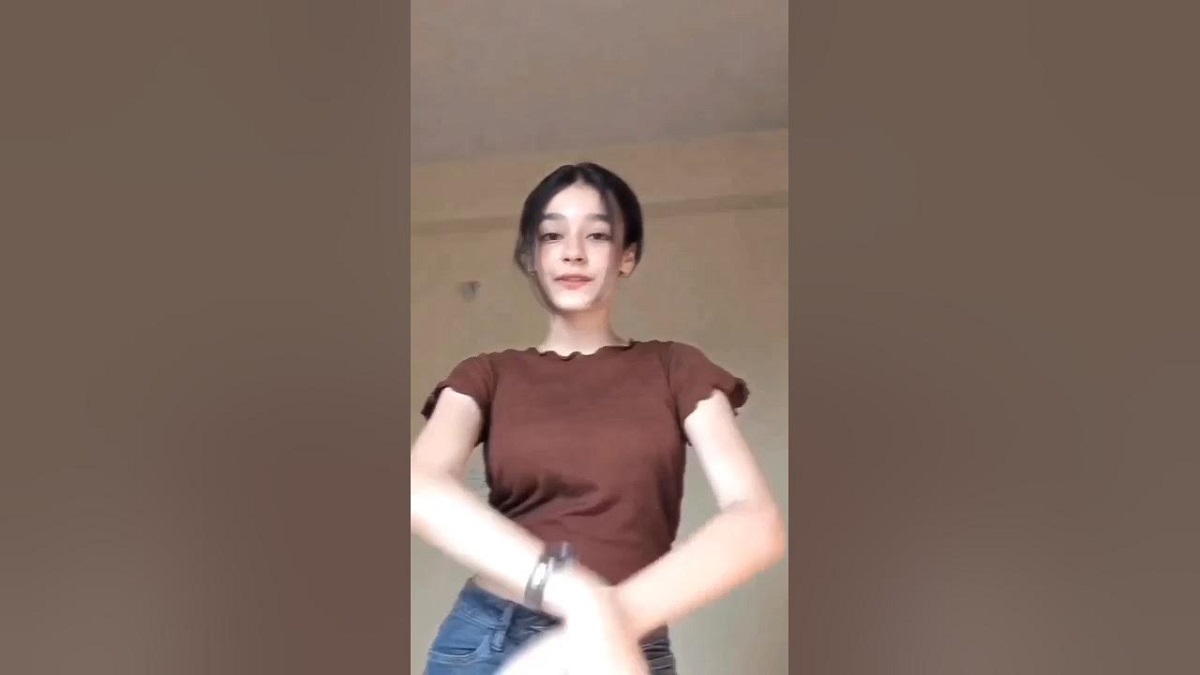Subhashree Sahu MMS Leak: Details & Controversy Explained
What happens when personal privacy clashes with the relentless reach of the internet? The Subhashree Sahu MMS controversy serves as a stark reminder of the vulnerability individuals face in the digital age.
The unfolding saga of Subhashree Sahu, a figure whose online presence encompasses platforms like Replit, Codepen, and Instagram, has captivated public attention. At the heart of the matter lies the alleged leak of a private video, an incident that has rapidly spiraled into a complex web of legal repercussions and public scrutiny. News of the controversy first emerged when an MMS video, reportedly featuring Subhashree Sahu, surfaced online. Its spread was swift, igniting a firestorm across social media and drawing the attention of fans, critics, and media outlets alike. The contents rapid dissemination prompted widespread discussions, speculation, and a growing awareness of the fragility of personal boundaries in an interconnected world. The incident triggered a cascade of reactions, from expressions of outrage and concern to calls for justice and an examination of the underlying issues surrounding privacy and online safety.
| Category | Details |
|---|---|
| Full Name | Subhashree Sahu |
| Known For | Social Media Presence, Alleged Leaked Video Incident |
| Date of Birth | Information Not Publicly Available |
| Place of Origin | Odisha, India |
| Active Platforms | Instagram, Replit, Codepen, and potentially others |
| Controversy | Alleged leaked MMS video; subsequent online discussions and legal ramifications |
| Legal Actions | A case was filed against the person who leaked her photos and videos under the Protection of Children from Sexual Offences (POCSO) Act and the Information Technology (IT) Act. |
| Age | She turned 18th on 7th november 2023 |
| Social Media Presence | Instagram, YouTube, and Twitter (used for updates) |
| Reference Website | Wikipedia (Example for Reference - Not Specific to Subhashree) |
The digital landscape, once heralded as a realm of limitless connection, has revealed its darker side. The Subhashree Sahu incident underscores the pervasive nature of online threats. The circulation of the video prompted a swift response from law enforcement. Cases were initiated against those involved in the leak, citing violations under the Protection of Children from Sexual Offences (POCSO) Act and the Information Technology (IT) Act. These legal actions reflect the seriousness with which authorities are addressing the issue. The complexity of the situation extended to the realm of social media. The incident led to the repeated deletion or banning of Subhashree's Instagram accounts, forcing her to create new backup profiles to maintain contact with her audience. It is a continuous cycle, that is a testament to the challenges faced by individuals targeted by malicious online activity.
- Latest Updates Movierulz Movie News Reviews
- 2025 Movie Guide Watch Online Reviews More Movierulz Beyond
The specifics surrounding the alleged leak remain under scrutiny. Reports suggest the video was shared without Subhashree Sahu's consent, amplifying the ethical dimensions of the situation. This non-consensual distribution has fueled discussions about digital consent, online privacy, and the responsibilities of social media platforms in managing content that violates personal boundaries. The incident also highlights the power of the internet to amplify and spread sensitive material. The video's widespread circulation prompted a flurry of reactions from fans, critics, and media outlets. This widespread attention contributed to the escalating narrative, further entrenching the incident in the public consciousness.
The implications of the Subhashree Sahu case extend beyond the immediate individuals involved. The legal battle is far from over. The timeline for justice remains uncertain. Developments continue to provide insight into the future course of action. The incident serves as a sobering reminder of the ongoing issues with online privacy. It underscores the need for robust measures to protect individuals from online exploitation and misuse of personal information. Additionally, it prompts a critical examination of the role of social media platforms in regulating content, ensuring user safety, and providing support for those affected by online harassment.
The incident is part of a larger pattern of non-consensual content sharing. Incidents like this frequently ignite a firestorm of public discourse, attracting diverse opinions and reactions. This incident quickly transformed into a subject of public discussion. Fans, critics, and media outlets all weighed in, adding layers of complexity to the already delicate situation. The discussion covered the authenticity of the video, ethical implications, and the broader ramifications for online privacy. The Subhashree Sahu incident further fuels the public discourse on online safety and privacy. Its a call to action for stronger measures to protect individuals from the malicious use of the internet.
- Hdhub4u Watch Download Movies What You Need To Know
- Where To Watch Alternatives Your Guide To Vega Vegamoviesist
Subhashree Sahu's story is not occurring in isolation. Similar incidents involving leaked private material are tragically common, demonstrating a widespread lack of respect for personal boundaries in the digital age. The ease with which such content spreads online is a major cause for concern. Once shared, the material is difficult to control. This reality poses a serious challenge to individuals, particularly in the face of harmful content. It is a situation that demands vigilance and proactive measures to combat online harassment and protect individuals from the consequences of leaked private material.
The response from authorities and the public has been varied. Many have expressed outrage and sympathy for the victim, condemning the actions of those involved in the leak. Others have focused on the legal aspects of the case, advocating for swift justice and the strict enforcement of relevant laws. The widespread attention has also sparked a broader discussion about online safety. This conversation extends to topics like digital consent, the responsibility of social media platforms, and the steps that can be taken to protect individuals from the negative impacts of online activity. The attention highlights the need for a cultural shift towards respecting personal boundaries. The goal is to ensure that online platforms become safe and supportive spaces for everyone.
The digital landscape is in constant flux. The Subhashree Sahu case is just one example. The incident is not isolated. It is part of a larger trend. The content's viral spread online highlights the potential impact of such actions. Furthermore, the legal responses and public discourse are critical components of a comprehensive strategy to address online privacy and safety concerns. The incident acts as a catalyst for meaningful change, prompting a renewed focus on the challenges posed by the digital age.
The case of Subhashree Sahu and the controversies surrounding her leaked video have sparked both interest and consternation. The incident serves as a test. It brings to light a number of key issues that must be addressed. The need for stronger privacy protections, responsible social media platforms, and a shared commitment to fostering a secure online environment are the key points. These measures are necessary for the digital age.
The young woman's story has captured the public imagination. The specifics of the incident have generated extensive coverage, sparking intense discussions across the board. The attention that has come from it underscores the significance of privacy in the digital age. The Subhashree Sahu controversy has also revealed the complex interplay between personal conduct, legal ramifications, and cultural perceptions in the digital world. The incident offers a chance to promote awareness, institute stronger safeguards, and cultivate a more secure and supportive online environment for all.
The case of Subhashree Sahu is multi-layered. The incident highlights the need for enhanced measures to protect individual privacy. The proliferation of leaked content has brought attention to the urgent need for individuals, businesses, and policymakers to proactively address these issues. The incident has also prompted a broader look at the responsibilities of social media platforms, as well as the ethical implications of online conduct. The goal is to create a digital environment that is safe and respects personal autonomy.
The controversy has ignited a wide range of emotions and ideas, highlighting the need for nuanced discussions about online safety. The incident highlights the urgent need for proactive steps to improve privacy standards, as well as foster a more ethical and responsible digital environment. The Subhashree Sahu story has a lot of relevance in today's society, where digital interactions have such a huge influence on everyday life.
The situation demonstrates the difficulties faced by individuals in the digital age. The leak's widespread circulation and the subsequent discussions emphasize the need for enhanced privacy protections and the implementation of online security. Furthermore, the Subhashree Sahu case highlights the necessity for cultural changes. The goal is to promote digital safety and ethical online behavior.
Article Recommendations
- Telugu Movies Movierulz Updates Latest News Streaming Info
- Movierulz 2025 Latest South Indian Movies News Must Know



Detail Author:
- Name : Prof. Leilani Auer DVM
- Username : karl.welch
- Email : elissa.jacobi@casper.net
- Birthdate : 1993-03-21
- Address : 7358 Bertrand Light New Gilbertofort, KS 56419-8242
- Phone : (251) 707-6231
- Company : Orn, Heathcote and Mertz
- Job : Motorboat Mechanic
- Bio : Suscipit molestias repellendus perferendis omnis voluptates quisquam voluptas quibusdam. Voluptate quo eum nihil tempora. Repellendus debitis aspernatur voluptatem velit veritatis commodi saepe.
Socials
instagram:
- url : https://instagram.com/gene9508
- username : gene9508
- bio : Incidunt ipsam quae cum natus. Sed labore ut repellat ipsam. Voluptatem ut odit numquam autem qui.
- followers : 6540
- following : 2051
facebook:
- url : https://facebook.com/simonis2014
- username : simonis2014
- bio : Voluptatem autem blanditiis aut non quaerat quidem quasi.
- followers : 3238
- following : 338
twitter:
- url : https://twitter.com/simonisg
- username : simonisg
- bio : Iure velit architecto voluptas fuga dolorem ad minus commodi. Ipsam voluptate recusandae quis et veniam.
- followers : 2645
- following : 1644
tiktok:
- url : https://tiktok.com/@genesimonis
- username : genesimonis
- bio : Cum odio iusto sapiente et enim voluptatem. Voluptas maxime praesentium qui et.
- followers : 5876
- following : 1563
linkedin:
- url : https://linkedin.com/in/simonis2014
- username : simonis2014
- bio : Nostrum soluta soluta libero praesentium.
- followers : 5382
- following : 1140